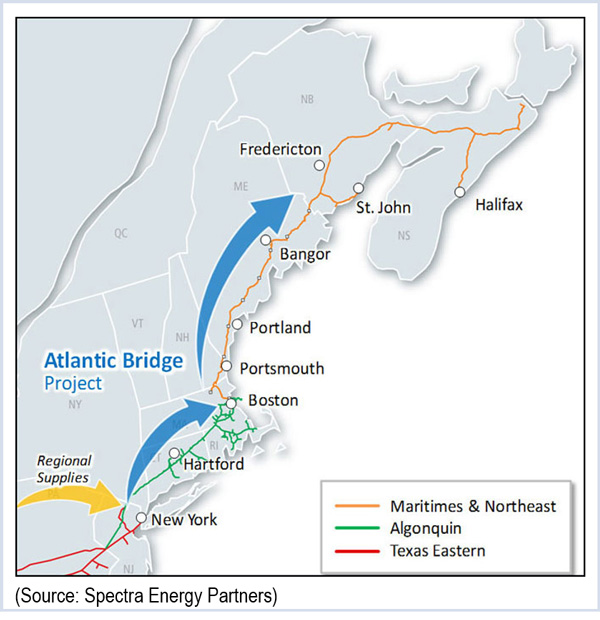By William Opalka
GLASTONBURY, Conn. — A hearing in a Connecticut suburb last week offered a microcosm of the energy debate swirling across New England as the region grapples with expanding its infrastructure to support its increasing reliance on natural gas-fired generation.

The meeting, one of a series being held in the three states, is part the initial phase of an environmental assessment.
Critics say the “segmenting” of the expansion review is a way to sidestep a review of the overall impact of the expansion. Developer Spectra Energy Partners says the project matches contractual supply commitments in place and does not need to address the region’s overall energy future.
Utilities, ISO-NE and most of the region’s governors strongly support proposals to build more pipeline capacity throughout New England to bring more natural gas from the Marcellus region.
Local landowners have complained of encroachments on their properties while environmentalists have invoked the national debates over climate change and natural gas extraction through fracking. (See related story, Another Meeting Day, Another Drama at FERC.)
Organized labor and business interests have aligned in support, citing jobs and economic development spurred by construction and lower electricity prices.
Nicholas Monacchio, representing the Laborers International Union of North America, highlighted the economy. “We are facing a real energy crisis due to the pipeline constraints … and the economic benefits will be a number of good-paying construction jobs,” he said.
“When businesses look around [and] they say ‘I can go to any state in the country and pay less for electricity than I do in Connecticut,’ we need to change that,” said Eric Brown, counsel for the Connecticut Business and Industry Association.
The counterargument came from the environmental community. “For every $1 million invested in gas, you get about five jobs. For $1 million in energy efficiency, you get 10 or 11,” said Martha Klein, communications chair for the Connecticut Sierra Club.
“These pipelines are meant for exports, which will lead to high profits for the pipeline, for which we are being forced to pay,” local environmentalist Dave Schneider said, referring to a proposed tariff by the states that would fund pipeline expansion through an assessment on electricity rates.
Spectra said the project will allow delivery of an additional 222,000 dekatherms of natural gas per day to Northeast markets by creating additional capacity between a receipt point on Algonquin’s system in Bergen County, N.J., and delivery points on the Algonquin and Maritimes systems.
In its latest monthly status report to FERC, Spectra reported that it has completed about 95% of the civil surveys required for the above-ground facilities and is conducting a geotechnical survey to document subsurface conditions and bedrock properties along the route. The geotechnical survey work will continue through the spring and summer of 2015.
Spectra has targeted an in-service date of November 2017.

